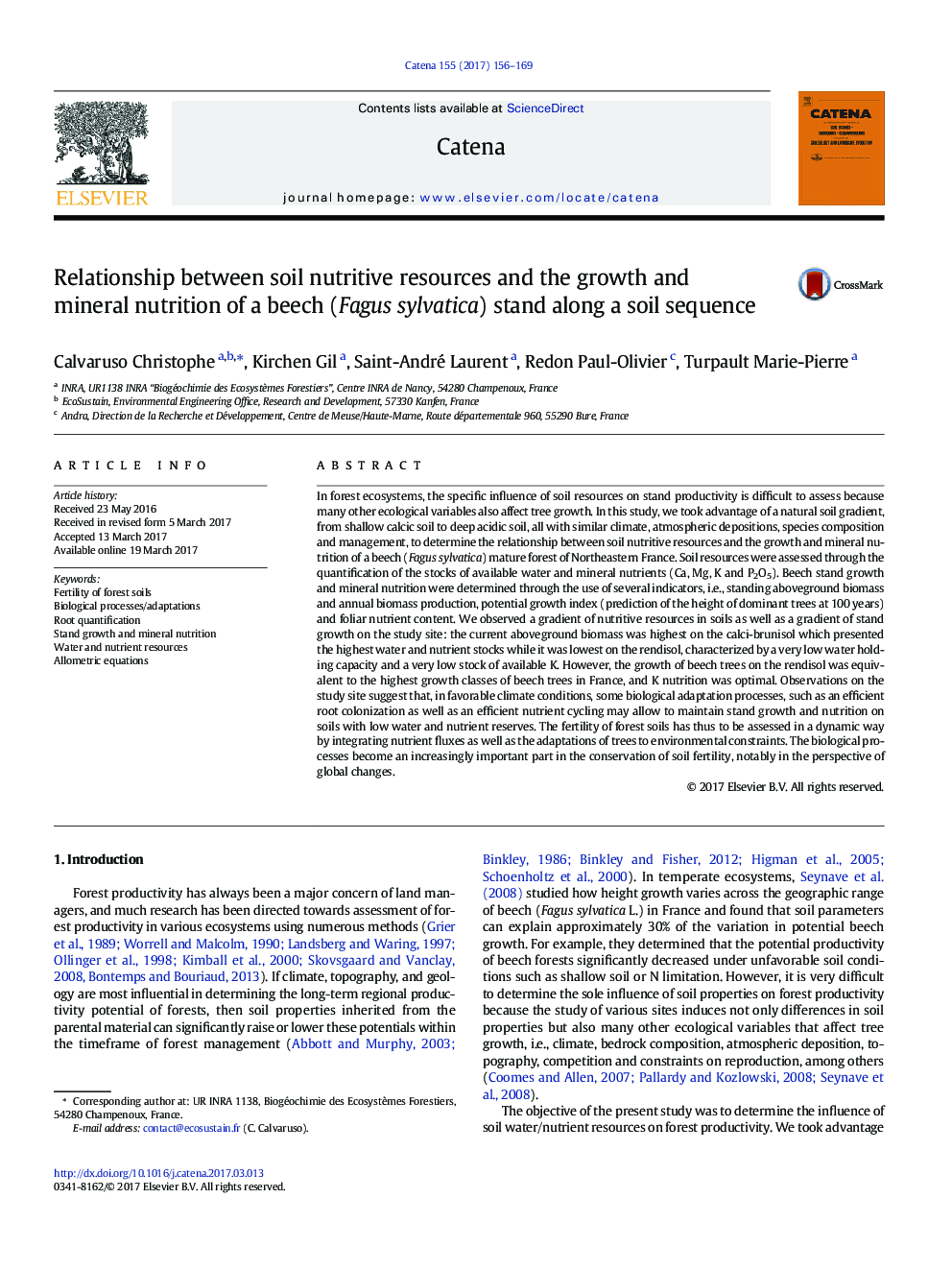| Article ID | Journal | Published Year | Pages | File Type |
|---|---|---|---|---|
| 5770134 | CATENA | 2017 | 14 Pages |
â¢Assessment of soil fertility via soil nutritive resources and stand responseâ¢Gradient of soil nutritive resources and gradient of beech stand growthâ¢Soil water and mineral nutrient resources influence stand growth.â¢High stand growth even on the soil with low water and K stocksâ¢In low nutritive conditions, biological adaptations may maintain stand growth.
In forest ecosystems, the specific influence of soil resources on stand productivity is difficult to assess because many other ecological variables also affect tree growth. In this study, we took advantage of a natural soil gradient, from shallow calcic soil to deep acidic soil, all with similar climate, atmospheric depositions, species composition and management, to determine the relationship between soil nutritive resources and the growth and mineral nutrition of a beech (Fagus sylvatica) mature forest of Northeastern France. Soil resources were assessed through the quantification of the stocks of available water and mineral nutrients (Ca, Mg, K and P2O5). Beech stand growth and mineral nutrition were determined through the use of several indicators, i.e., standing aboveground biomass and annual biomass production, potential growth index (prediction of the height of dominant trees at 100Â years) and foliar nutrient content. We observed a gradient of nutritive resources in soils as well as a gradient of stand growth on the study site: the current aboveground biomass was highest on the calci-brunisol which presented the highest water and nutrient stocks while it was lowest on the rendisol, characterized by a very low water holding capacity and a very low stock of available K. However, the growth of beech trees on the rendisol was equivalent to the highest growth classes of beech trees in France, and K nutrition was optimal. Observations on the study site suggest that, in favorable climate conditions, some biological adaptation processes, such as an efficient root colonization as well as an efficient nutrient cycling may allow to maintain stand growth and nutrition on soils with low water and nutrient reserves. The fertility of forest soils has thus to be assessed in a dynamic way by integrating nutrient fluxes as well as the adaptations of trees to environmental constraints. The biological processes become an increasingly important part in the conservation of soil fertility, notably in the perspective of global changes.
